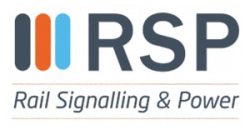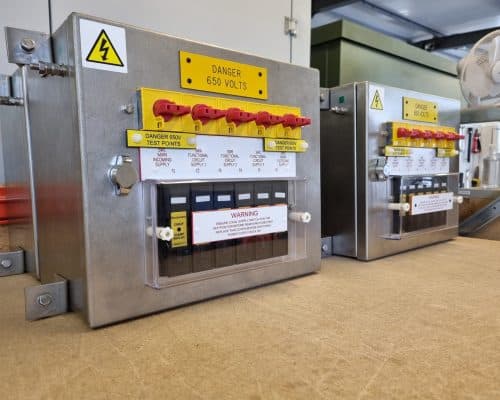Switchgear housings and panels are found in most electrical power distribution systems and are key for reliability and safety. The railway is no different and having a near 24/7 operational railway network means having the best power distributions systems.
What is railway switchgear?
The railway has many different and separate power distribution systems but we will focus here on the signalling power distribution system which typically operates at 230V, 400V or 650V. In the signalling power distribution network railway switchgear are the assemblies that allow for the network to be fully isolated and switched off or for just local isolations. In addition the switchgear provides critical safety features.
What is a switchgear assembly composed of?
Railway switchgear typically contains isolation switches for the main incoming and outgoing power supply, further isolation switches for the local supply feeds and circuit protections devices including fuses, surge protection devices and mcbs as required by the local arrangements.
The main switches allow for the safe isolation of the main power conductors and ensure that work can be carried out in a safe manner.
The functional supply switches allow for local isolation of equipment that means work can be carried out safely whilst minimising disruption to the wider network.
The circuit protection devices along with any local transformers provide protection to both staff and equipment to further increase safety and the operational reliability of the network.
Where are railway switchgears found?
Switchgears are found within Principal Supply Points, Auxiliary Supply Points and Functional Supply Points alongside trackside transformers.
Why is railway switchgear important?
Railway switchgear is an essential safety component, containing a circuit breaker and other key components to help prevent electrocution and electrical fires at key power supply points across the rail network.
How is switchgear changing due to SIN119?
Network Rail have been working alongside third parties to improve safety at FSPs and LOCs after the SIN119 report suggested that its 650V trackside power supply points did not do enough to prevent danger caused by high voltage, for members of the public as well as maintenance personnel and other railway workers.
One of the solutions that Network Rail have introduced is Class II switchgear housings – switchgear that has two layers of insulation. This reduces the risk of electrocution and electrical fires at 650V location cases. Our FSP04 switchgear assemblies are specifically designed for this.
What switchgear does RSP supply?
Here at RSP we supply a range of functional supply point switchgear assemblies for multiple applications in accordance with Network Rail standards NR/L2/SIGELP/27409 Issue 2.
FSP01/02 and FSP02 range of metal clad switchgear assemblies are available in 240V and 650V configurations and are suitable for single and dual end-fed systems with manual reconfiguration.
FSP03 switchgear assemblies are available for voltages from 110V to 650V signalling power installations, both AC and DC. The FSP03 range can be installed with all approved ARS systems on the market and within dual end-fed auto reconfiguration systems.
FSP04 range of switchgear assemblies is specifically designed to work with SIN119 and replace existing Class I installations that need to be updated.
We also offer custom made auxiliary and principal supply points designed to your specification.
If you need help to decide which FSP you need or want to place an order for any of our switchgear containing products then please contact one of our expert team who will be more than happy to be of assistance.

